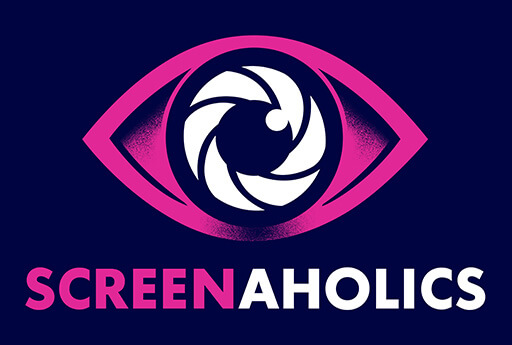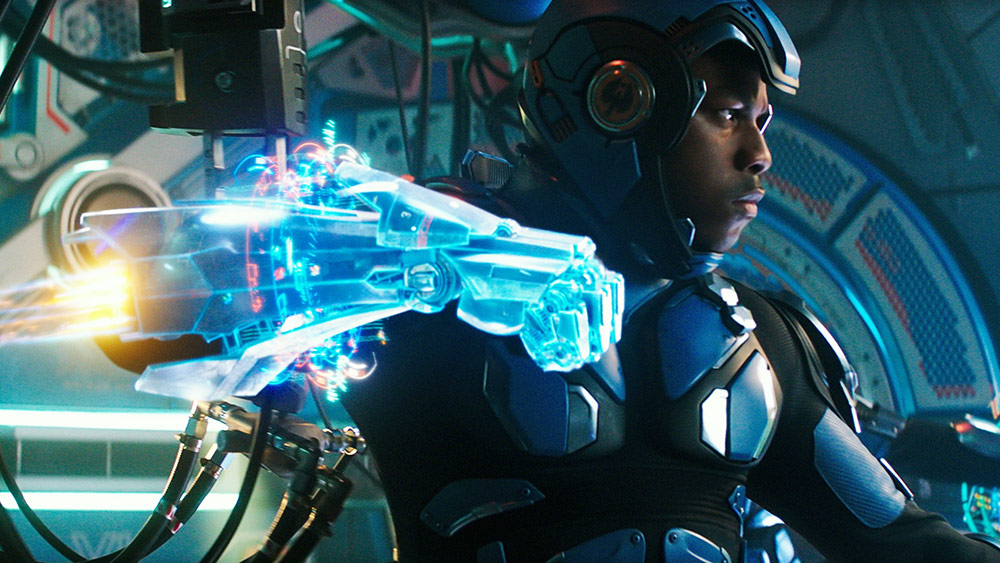Pacific Rim Uprising is a surprisingly competent sequel to what is essentially an over intellectualised apocalyptic ‘robot versus monsters’ movie.
The world building is stronger than the first film, and director Steven S. DeKnight does successfully out-direct Guillermo Del Toro in pulling off the highly ambitious and action packed, yet character driven story. Many will miss Del Toro’s visible passion for the genre, and see this as more of a Hollywood Saturday morning cartoon version of the franchise, however those who don’t over think it, will appreciate the strong balance of story, emotion and action.
Uprising picks up from the original Pacific Rim (2013) 10 years on, and the world is still devastated by Kaiju attacks, with haunting scenes of dinosaur-sized skeletons amidst the debris of destroyed coastal metropolis’ along the Pacific Rim. In an array of rapid-paced action, we are immediately introduced to various new themes, alongside the new characters. Cailee Spaeny, who plays a young girl, Amara Namani, is caught forging illegal Jaeger’s from scrapyards caused by the decade old catastrophe. Meanwhile, John Boyega plays Jake Pentecost, son of Marshal Stacker Pentecost, the heroic general from the original film, who unlike his father has abandoned his training and become immersed in the criminal underworld. When Pentecost and Namani are arrested by the PPDC, they are forced to join the Jaeger program. A few characters reprise their roles, including Boyega’s half sister Mako Mori played by Rinko Kikuchi, and the always loveable duo of Charlie Day and Burn Gorman as the creepy scientists Dr. Herman Gottlieb and Dr. Newton Geiszler.
The story is a mystery-drama at its core, as the United Nations is attacked by a rogue Jaeger the same day the Shao corporation intends to unveil its new drone program. Pentecost, Namani and a new crew of anxious Jaeger marines must find out who is behind the attack. Is it the evil alien race of Precursors who are sending the monstrous Kaiju to take over Earth? Or is there a human element to the recent catastrophe?

Without spoiling the ending, Pacific Rim Uprising has many surprising twists and turns up its sleeve, and will keep the audience entertained until the climactic finale, where you get what you came to see in spades: Giant robots battling giant monsters with spectacular visual effects and mind-blowing action sequences.
Australians will be delighted to see their beloved city of Sydney featured heavily as it is cathartically demolished by dueling machines, in the scene where the rogue Jaeger first makes his appearance. Charlie Day outshines his original performance, and for me was the favourite aspect of the film. Jing Tian is also captivating as the head of the sinister Shao corporation. However, the Jaegers and the Kaiju lack a lot of personality unfortunately, both in comparison to the original film, and to the genres which inspired them. Rather than opting for the more fun types of monsters and robots from anime Mecha and Kaiju origins; such as Mothra, or the three headed dragon King Ghidorah – the franchise has opted for more ‘realistic’ looking monsters, essentially having a more evolutionary looking biology to the Kaiju.
There is a long history to absorb in order to fully appreciate the mythology of Pacific Rim Uprising and its prequel. The Kaiju genre (Japanese for ‘strange beast’) of course came into being with the first Godzilla movie in 1954, begining the Kaiju trope of giant monsters attacking cities before being engaged by Earth’s military. Godzilla was in turn inspired by the American King Kong, and the history of jurassic beasts of the Pacific has been developed time and again, from Skull Island, to Isla Nublar in the Jurassic Park series. Godzilla was supposed to represent the fears of the Japanese people in the wake of World War II, and the nuclear bomb used to end the war on the Pacific front. Even in Godzilla’s origin stories, he was said to be “awakened by atomic testing”, but this theme was explored throughout the Kaiju’s history almost to death, eventually giving way to Pacfic Rim’s more complex story of alien colonisation from Triassic times, letting loose the Kaiju into our dimension.
The Mecha genre of anime, which inspired Del Toro’s ‘Jaeger’ has equally long traditions, mostly considered to have started with the anime Mazinger Z, which clearly also shows its own influence from the robots of Osamu Tezuka and groundbreaking series’ such as Astro Boy.
This was the first anime that had a human being piloting a robot and shows the fun and outlandish origins of the genre in clear colourful silliness:
The Mecha tradition evolved over the years, and Del Toro has claimed to be influenced by later ‘real robot’ traditions like the suits from Mobile Suit Gundam, Macross, and Patlabor:
Many have also made comparisons between Pacific Rim and the cult Neon Genesis: Evangelion series, set in the futuristic city of Tokyo-3 where Shinji, a teenage boy, pilots a giant Evangelion machine into combat with alien beings referred to as ‘Angels’, whose awakening were foretold by the dead sea scrolls, however Del Toro himself has underplayed the Neon Genesis influence.
What’s particularly interesting about Pacific Rim Uprising and its predecessor is where it sits on the scale of the Western Gothic and Science Fiction tradition. Travis Beacham, the writer of the original film was quoted as noting how Japan seems to have long adopted a different stance to the West on its technological future, lacking the consistent technological warning from the Gothic tradition of stories such as Mary Shelley’s Frankenstein. Whilst America has continued to produce films like those of the Terminator franchise (apocalyptic doomsday stories of machines destroying mankind), Japan has for years fully embraced a robotic future in its art. On an emotional point, as Stephen Hawking died recently leaving behind his ominous warnings about the dangers of artificial intelligence, Pacific Rim seems to form part of the West’s changing perception on technology. Compared to the Transformers films, who represent machines completely out of human control, Pacific Rim shows a future where man is both in control of machines, and a reliant friend to his own technology.
Add to this, the strange conglomerate of mythologies, from King Kong to Godzilla and the Cthulhu Mythos of H.P. Lovecraft, the coming together of American, European and Japanese fiction into this Pacific malaise, seems a fertile ground for future fiction. If indeed the alleged crossover of Pacific Rim, Godzilla and King Kong comes into fruition, we are entering an interesting age of human mythology.

Or, does this trend of combining film mythologies into a nerdish combined mythos represent a foolish trend in blockbuster filmmaking? While we’re at it, why not chuck in the whole Marvel universe to battle the Kaiju as well?
Last year I reviewed the film Colossal, which provided a more original and outside-the-box take on the Kaiju monster, for those who are sick of crossovers and shared worlds. It’s nice that some filmmakers are still keeping their tales off the grid, with more emotional connection to reality.
The influence of Japan on American fiction only seems to be increasing, and I imagine we will be getting more of these Kaiju and Shinto stories intermingled with our evil robots and demonic hauntings in future big budget films, and I for one totally welcome the change.
If you liked Pacific Rim, you’ll most likely enjoy Pacific Rim Uprising, though it is unlikely to bring new fans to the series. Don’t go in expecting much more than titanic battles of Mecha and Kaiju smashing buildings near the Harbour Bridge and Sydney Opera House, but if you do go for this, you certainly won’t be disappointed.
Fun Fact:
Guillermo Del Toro was set to direct Pacific Rim Uprising, but stepped down to direct The Shape of Water (2017). Lucky he did so, as the film pulled the Academy Award for Best Picture.




COMMENTS